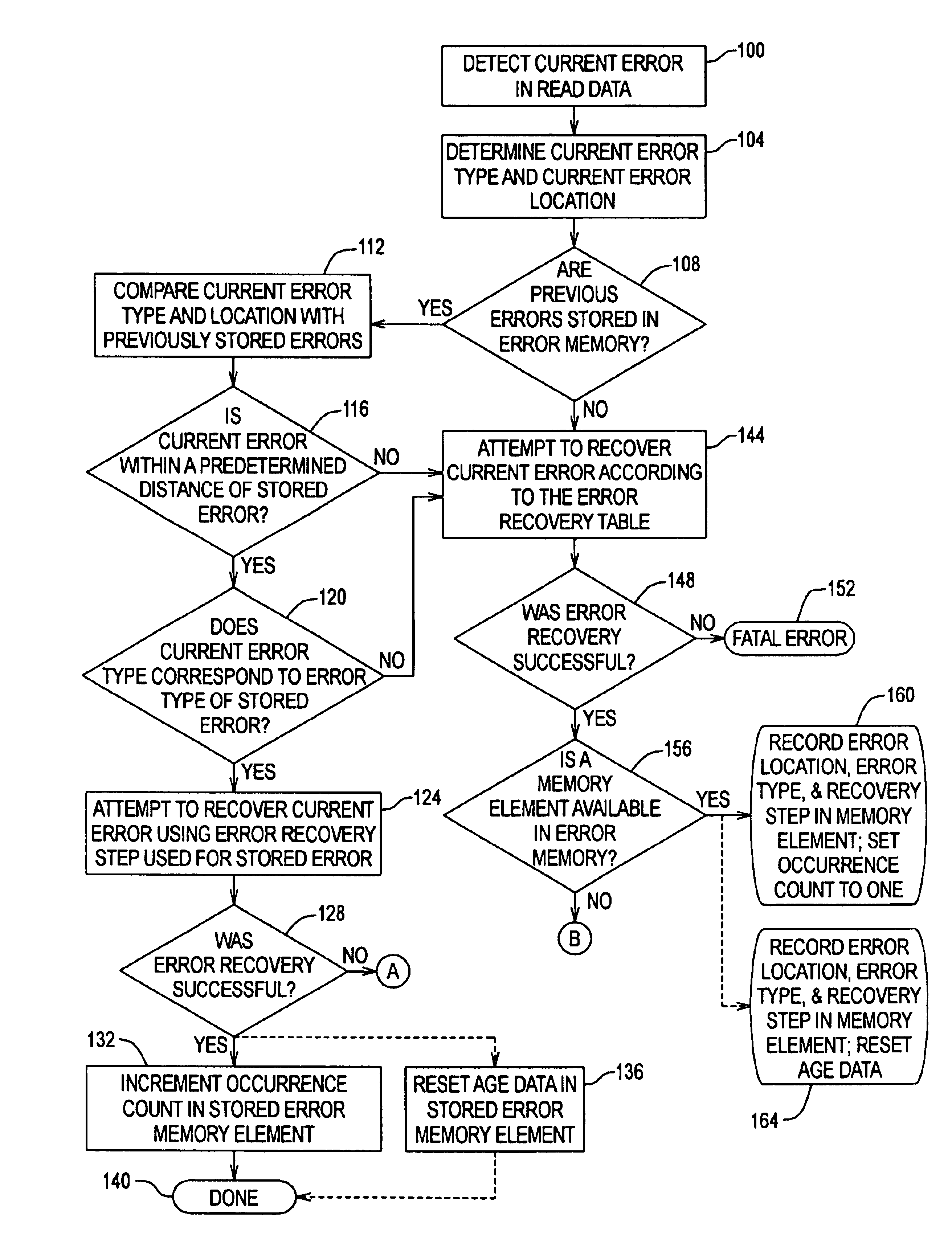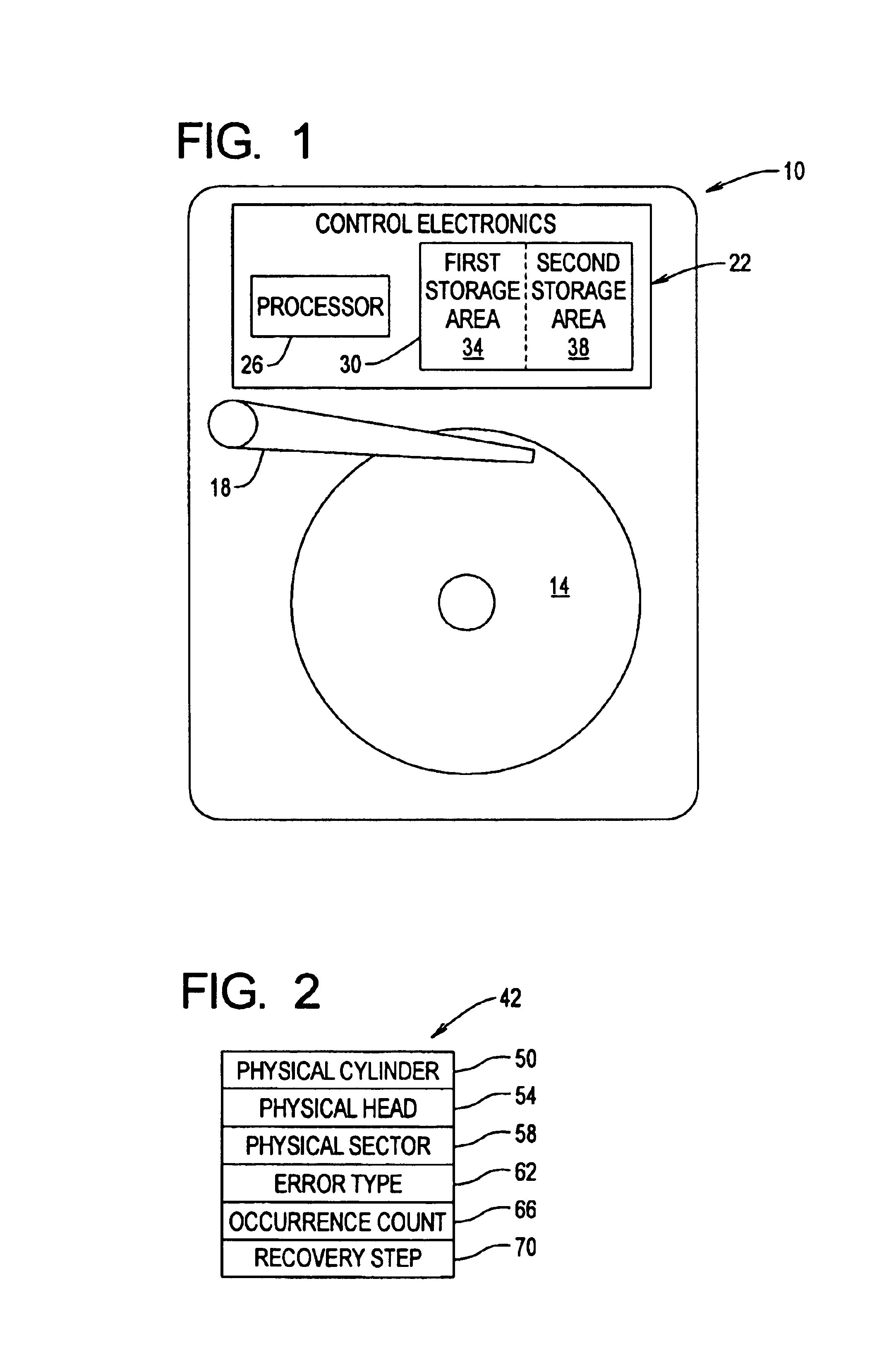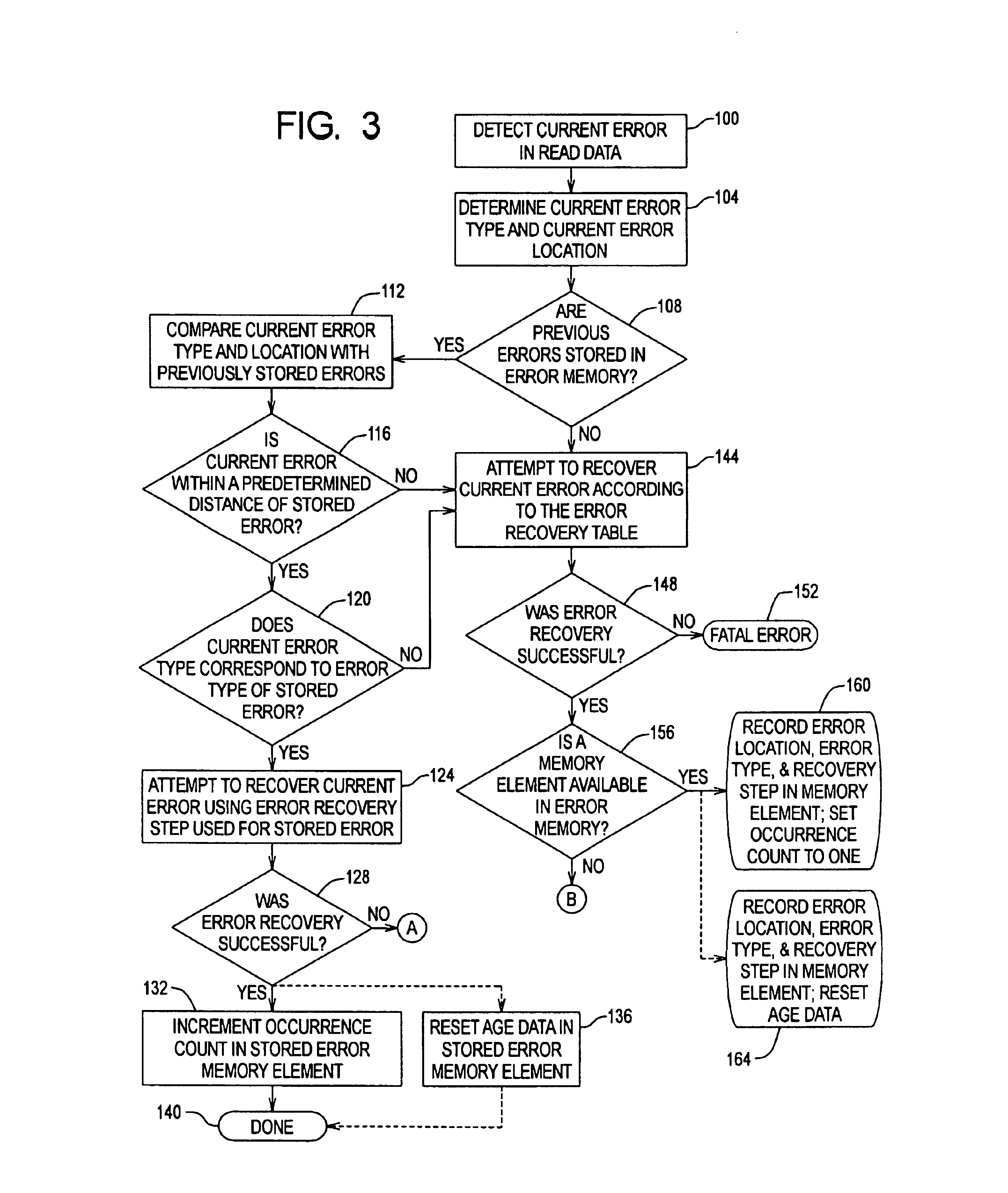Method and apparatus for reducing error recovery time in hard disk drive
- Summary
- Abstract
- Description
- Claims
- Application Information
AI Technical Summary
Benefits of technology
Problems solved by technology
Method used
Image
Examples
Embodiment Construction
[0025]While this invention is susceptible of embodiments in many different forms, there are shown in the drawings and will herein be described in detail, preferred embodiments of the invention with the understanding that the present disclosure is to be considered as an exemplification of the principles of the invention and is not intended to limit the broad aspects of the invention to the embodiments illustrated.
[0026]FIG. 1 is a block diagram illustrating certain components of a hard disk drive that may be used in connection with the present invention. The hard disk drive 10 includes a magnetic disk 14, an actuator arm 18, and control electronics 22. Within the control electronics 22 are a processor 26 and a memory 30. It will be understood that the processor 26 and memory 30 may be integrated on a single chip, and that, likewise, multiple processors 26 and memories 30 may be present within the control electronics 22. Within the memory 30 is a first storage area 34 which can store ...
PUM
 Login to View More
Login to View More Abstract
Description
Claims
Application Information
 Login to View More
Login to View More - R&D
- Intellectual Property
- Life Sciences
- Materials
- Tech Scout
- Unparalleled Data Quality
- Higher Quality Content
- 60% Fewer Hallucinations
Browse by: Latest US Patents, China's latest patents, Technical Efficacy Thesaurus, Application Domain, Technology Topic, Popular Technical Reports.
© 2025 PatSnap. All rights reserved.Legal|Privacy policy|Modern Slavery Act Transparency Statement|Sitemap|About US| Contact US: help@patsnap.com



